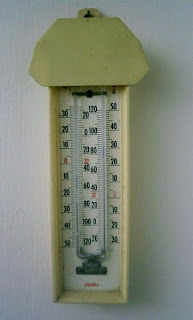According to the Guinness World Records, the world's largest weather vane is a Tío Pepe sherry advertisement located in Jerez, Spain. The city of Montague, Michigan also claims to have the largest standard-design weather vane, being a ship and arrow which measures 48 feet tall, with an arrow 26 feet long.
A challenger for the title of world's largest weather vane is located in Whitehorse, Yukon. The weather vane is a retired
Douglas DC-3 CF-CPY atop a swiveling support. Located at the Yukon Transportation Museum beside
Whitehorse International Airport, the weather vane is used by pilots to determine wind direction, used as a landmark by tourists and enjoyed by locals. The weather vane only requires a 5 knot wind to rotate.









